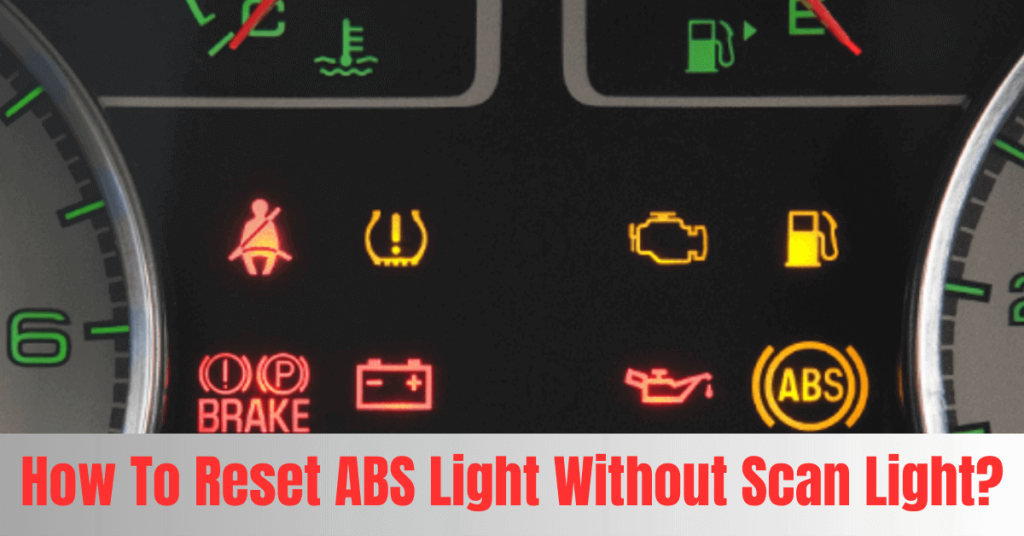
An ABS light on your dashboard can be worrying and may lead to costly repairs. However, it may only sometimes be a major issue, as it can be caused by something as simple as low brake fluid. There are so many ways to detect it, that how to reset ABS light without scan tool.
The process of resetting the ABS light without a scan tool can vary depending on the make and model of your car. Depending on the vehicle, it may involve the use of an OBD port or ABS diagnostic port, disconnecting the battery, or performing certain steps on the brakes or gas pedals.
So, read further down in this article to know how to reset the ABS light without a scan tool.
What Is ABS System & How Does It Work?
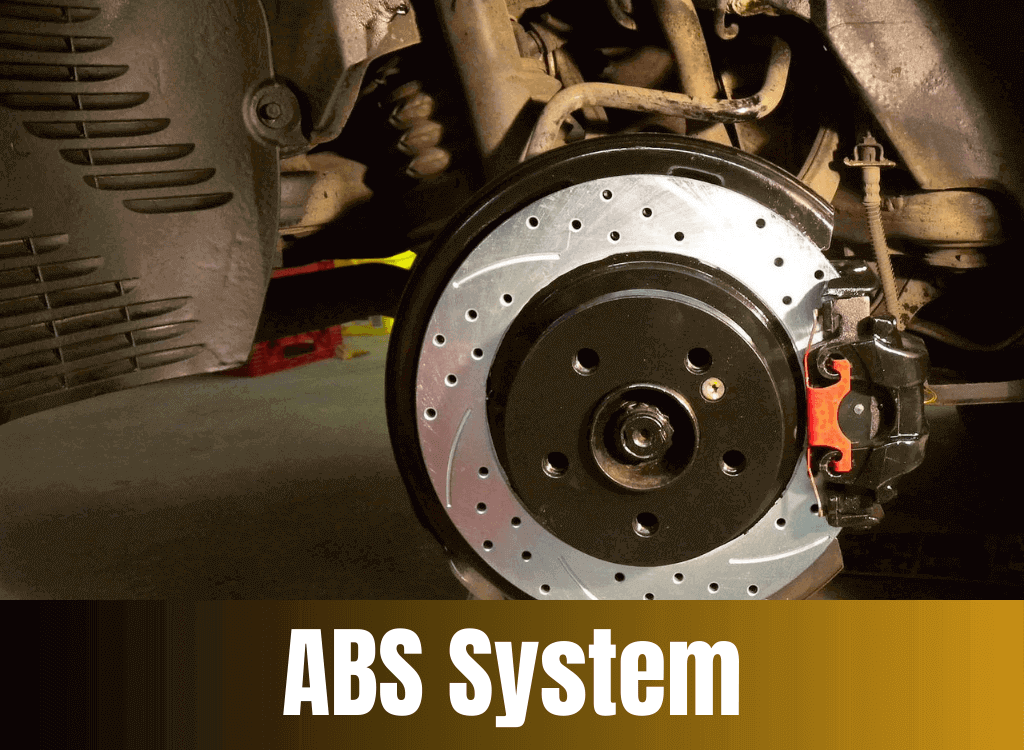
The ABS (Anti-lock Braking System) is a safety feature found in most modern vehicles. It helps the driver maintain steering control and stability while braking. When braking hard or on slippery surfaces, prevent the wheels from locking up.
ABS monitors the wheel speed using sensors on each wheel. When the system detects that one or more wheels are about to lock up, it pulses the brakes on and off rapidly to prevent the wheel from skidding. This is done automatically, and the driver may feel a pulsing sensation in the brake pedal when the ABS system is activated.
It uses a series of valves and sensors to control the brake pressure going to each wheel individually. When the driver applies the brakes, the system uses the sensors to detect if any wheels are about to lock up. If it detects a wheel is about to lock up, it reduces the brake pressure on that wheel, which allows it to continue rotating. This helps to maintain steering control and stability while braking.
Moreover, ABS can work with other safety features like Traction Control System (TCS) and Electronic Stability Control (ESC) to improve the vehicle’s overall safety.
What Causes The ABS Light To Come On? How To Fix It?
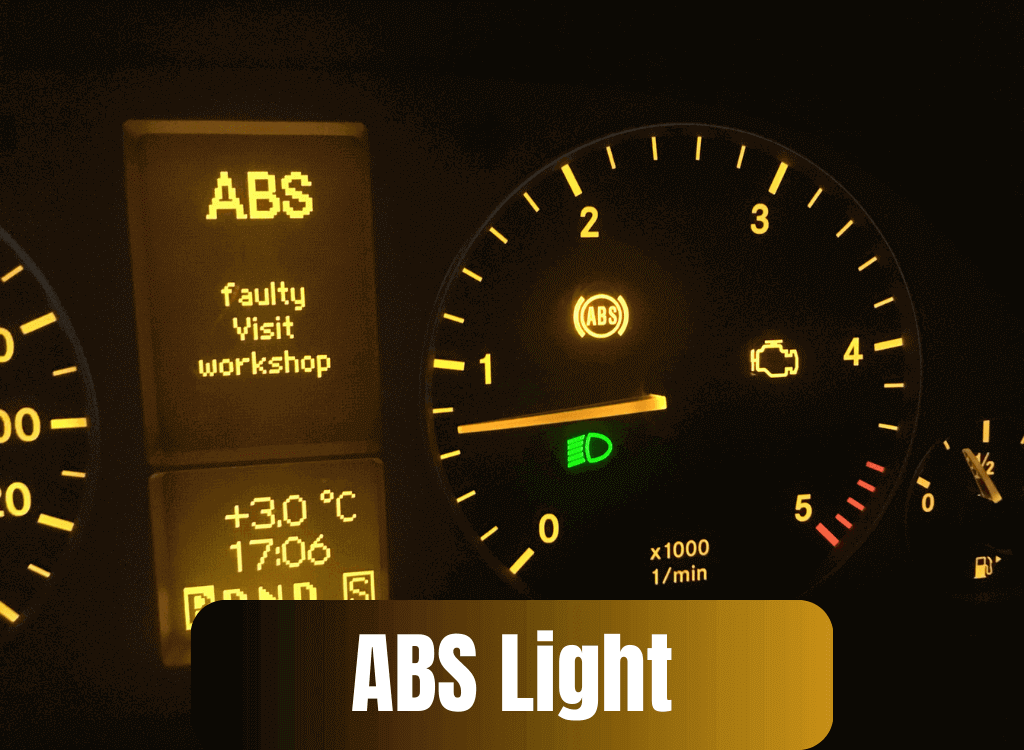
The ABS warning light could be on for several reasons, and before you try to turn it off, you should check the system and address any problems you find. Otherwise, the ABS warning light would return soon after the reset, and driving with a defective ABS is dangerous.
Moreover, turning off the traction control and the anti-lock brake systems is common practice when the ABS warning light comes on. Both of those things have a major bearing on security. So, here are a few potential triggers for the red alert.
Low Brake Fluid
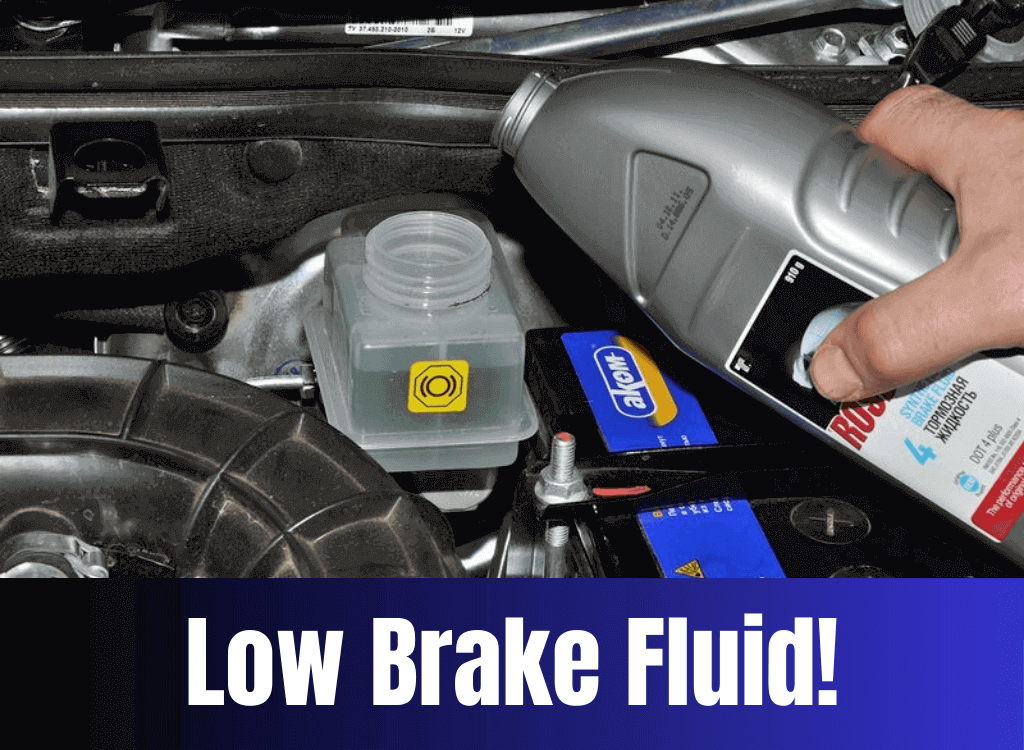
Moreover, driving with insufficient brake fluid might cause permanent damage to the ABS’s internal components, rendering the system useless. When the ABS control module detects low fluid, it immediately activates the warning indicator and turns off the system.
Typically, the automobile will stop working after being driven for 10–15 miles with the brake fluid at a regular level.
Otherwise, the warning light will need to be reset, and if it comes on again soon after, there is likely another problem.
A faulty Speed Sensor
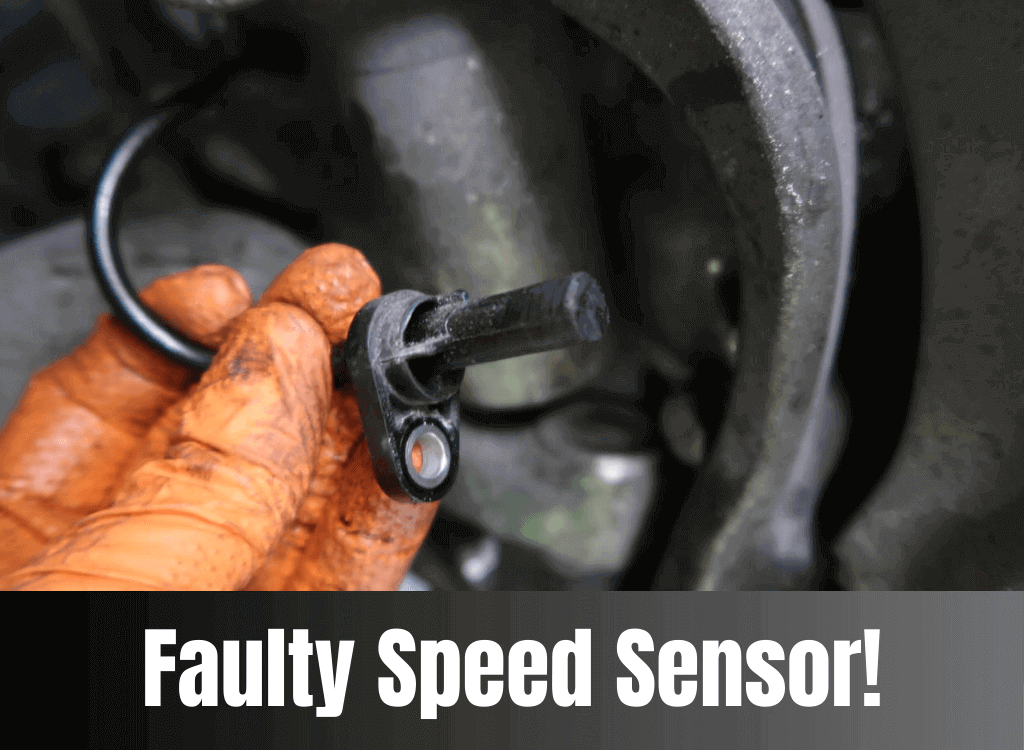
If your vehicle’s speed sensor malfunctions, the traction control warning light will also likely come on. Scan the car for error codes first, then replace the broken component before resetting the ABS light.
On average, that will cost you roughly $100, with most of that going toward the labor expense. Also, the actual speed sensor may cost as little as $20. Check out the instructions below to see if you can replace it and save some cash.
Step-by-Step Guide:
- To begin, take the negative cable off the battery.
- Then, jack up the automobile and place a jack stand under the wheel with the broken speed sensor.
- You’ll find the speed sensor attached to a cable just behind the wheel’s hub.
- One bolt typically secures the speed sensor; dip it in a rust remover to prevent it from breaking.
- You must take off your wheel’s speed monitor to get to the connector and search along the cable. It could be hidden under a plastic shield.
- Pull the plug and replace the sensor if the speed is inaccurate.
Faulty ABS Module
In addition to the warning light, ABS can make the brake pedal stiffer or require repeated presses to work. Sometimes, the speedometer stops operating altogether.
Repairing an ABS module is a costly endeavor for any vehicle owner. A new module costs about $800 for a Ford F-150 and about $1,400 for a Honda Civic. When compared to the module’s price, the average labor cost is between $50 and $100.
Furthermore, when upgrading the module, you must bleed the system. It is a complex process; even with a cheap labor cost, it is advisable to have a professional do it.
Low Battery Voltage
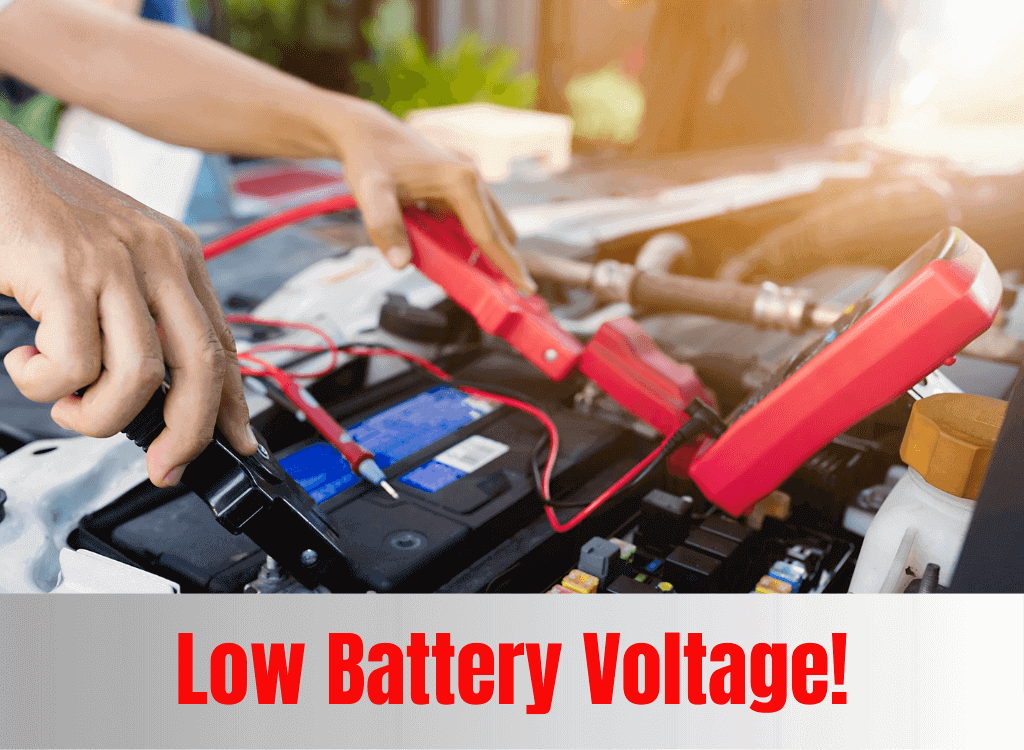
Multiple sensors are necessary for the operation of the ABS. Any power supply interruption will turn off the system and illuminate an ABS warning light. So, if you’re worried this could happen, quickly checking with a multimeter will reveal the truth.
Maintenance issue
Because of its vital role in protecting the lives of motorists, passengers, and pedestrians, the anti-lock braking system (ABS) is frequently the target of thieves. Removing the wheel speed sensor while changing components like brake pads or tires is standard practice. Especially in modern cars, that’s often enough to turn on a warning light.
Also, it must be clarified if other maintenance, like bleeding the brakes, replacing the brake pads, or changing the battery, can affect the ABS warning light. Furthermore, If you fixed something and then the warning sign came on, attempt to turn it off and on again.
How Do You Turn Off The ABS Light?
Now that you’ve repaired the faulty ABS parts or performed the necessary maintenance, you should reset the warning light. Although the instructions below are all prepared for a specific model, the same general ideas should apply to manuals for the same manufacturer and generation.
However, you won’t find these instructions in a workshop manual. Therefore they don’t apply to every vehicle. The ABS warning light is typically turned off after some time, even if a problem occurs.
Turning it off using a scan tool is more straightforward, but the following instructions will be helpful if that’s not an option. Assuming your vehicle is older and has an OBD1 port, removing the power source for a few minutes is the last resort.
Why Does Your Ford Focus ABS Light On?
Watch Here
Your Ford Focus ABS light or Ford Fiesta ABS light may be on for several reasons. Here are a few common causes:
- Low brake fluid: A lack of brake fluid may cause the ABS system to malfunction, which will illuminate the ABS light.
- Faulty wheel speed sensors: ABS monitors the wheels’ speeds with wheel speed sensors. The light will illuminate if the sensor malfunctions.
- Control module failure: The ABS control module is the system’s brain. If it fails, the light will come on.
- Wiring issues: Any damage or issues with the wiring of the ABS system can cause the light to come on.
- Failed brake caliper: In some cases, a failed brake caliper can also cause the ABS light to come on.
Moreover, it’s important to note that the ABS light coming on does not necessarily mean the ABS system is not working. It could mean there is a problem with the ABS system that needs attention.
How To Turn Off ABS Light On Ford Fiesta
Watch Here
Turning off the ABS light on a Ford Fiesta can be done by addressing the underlying issue that caused the light to come on in the first place. Here are a few steps that may help turn off the light:
- Check the brake fluid level: If the brake fluid level is low, add more fluid until it reaches the proper level.
- Inspect the wheel speed sensors: Check the wheel speed sensors for any damage or malfunction. If a sensor indicates to be faulty, better replace it.
- Inspect the ABS control module: If the ABS control module is found to be faulty, it’s better to replace it.
- Inspect the wiring: Check the wiring of the ABS system for any damage or issues.
- Inspect the brake caliper: Check the brake caliper for any damage or issues.
- Have a qualified mechanic diagnose the problem: If you are not able to diagnose the problem, it is better to have a qualified mechanic check the vehicle to determine the cause of the ABS light coming on and make any necessary repairs.
It is important to note that if the ABS light is on, it may indicate a problem with the ABS. & that needs to maintain to ensure the vehicle’s safety.
So you can disconnect or replace it. But it is also important to check what triggered the sensor before disconnecting it, as it may cause other issues or make the vehicle unsafe.
How Do You Reset the ABS Light on a Toyota?
Watch Here
From 2007 to 2013, this reboot took place on a Corolla of the tenth model. Connecting the two OBD2 terminals requires a hardwired connection. Be prepared with a paper clip or other thin wire. See the picture below for details on which terminals should be permanently connected.
Instructions to Apply:
- Connect pins 4 and 13 of the OBD2 connector using a tiny cable or a paper clip.
- Put the key in the ignition, but wait to start the automobile.
- Eight times, or about once every second, pump the brake.
- After 5 or 10 seconds, turn the engine off.
- If there’s a cable or a paper clip in the OBD2 port, take it out.
- Turn the key, and the ABS warning light should go out.
How Do You Reset the ABS Light on a Subaru?
Watch Now
The ABS warning light is most likely illuminated since the system is uncertain of the information it receives through the wheel sensor—Anti-lock brakes, you see, function by keeping track of how each wheel spins.
The steps below will also work for any Subaru Impreza GC8 from 1992 to 2000. Even if your Subaru doesn’t have an OBD2 port, it should still work.
Instructions to Apply:
- Find the diagnostic plugs in the fuse box area under the dashboard.
- You’ll be using the black one; there are three total, plus two for diagnostics.
- Just turn the key in the ignition without starting the car.
- Referring to the diagram below, insert a diagnostic pin into terminal 6 of the black diagnostic connection.
- Put the pin in, wait a fraction of a second, and take it out three times.
- The car must be started with the ignition turned off.
How Do You Reset the ABS and VSA Light on a Honda and Acura?
If the ABS warning light comes on in your Honda Accord, it’s time to look at your anti-lock braking system.
Hondas are similar to Toyotas in that resetting the ABS light requires physically connecting both terminals on the onboard diagnostics port (OBD2). All Hondas and Acuras manufactured between 2000 and 2016 are compatible with this fix.
However, see the OBD2 picture below for a visual of the terminals you should use for the hard wire.
Instructions To Apply:
- Find the OBD2 ports and the terminals for the rigid wires (terminals 4 and 9) using a tiny cable or a paper clip.
- To stop, step on the brake.
- Don’t start the automobile, but turn the key on.
- You can let up on the brake when the ABS indicator shuts off.
- The ABS indicator will flash continuously; keep your foot firmly on the brake until the light goes out again.
- Please turn it off again, then take your foot off the brake.
- Once you do so, the ABS light will blink twice to let you know it has been reset.
How To Reset ABS Light Without Scan Tool?
Resetting the ABS light without a scan tool can vary depending on the make and model. Here are a few methods that may work:
- Disconnecting the battery: Disconnecting the battery for a few minutes and then reconnecting it can sometimes reset the ABS light.
- Using the OBD or ABS diagnostic port: Some vehicles have an OBD or ABS diagnostic port to reset the light.
- Pressing the brake or gas pedal: In some cases, you can use a specific sequence of pressing the brake or gas pedal to reset the light. Consult your vehicle’s owner’s manual for specific instructions.
- Checking the fuses: Check the fuses related to the ABS; if they’re blown or loose, fix or replace them.
- Have a qualified mechanic diagnose the problem: If you are not able to diagnose the problem and reset the ABS light, it’s better to have a qualified mechanic check the vehicle to determine the cause of the ABS light coming on and make any necessary repairs.
How Can A Low Battery Cause ABS Light To Come On?
Because the ABS system depends on the vehicle’s electrical system for power, a low battery could turn on the ABS light. A weak or dying battery may not be able to provide enough power to the ABS.
& causes the ABS light to illuminate as a warning that the system is malfunctioning. Additionally, if the battery is low, it may not provide enough power to properly start the car, which may also cause the ABS light to come on.
However, it is worth mentioning that a low battery alone might not be the only problem. And there could be other issues with the car’s electrical system or the ABS itself, causing the light to come on.
If The ABS System is On, The Car Won’t Start?
A safety feature in a car called the ABS (Anti-lock Braking System) keeps the wheels from locking up when the brakes are applied heavily. When the ABS system is on and the car won’t start, it may indicate a problem with the ABS system or a related component that is preventing the car from starting.
Further, some common causes for this issue may include a faulty ABS control module, a problem with the brake system, or an issue with the car’s electrical system.
In order to diagnose and fix the problem, it may be necessary to take the car to a mechanic or dealer for further examination.
How To Maintain ABS System To Work Properly?
There are several steps you can take to maintain the ABS system in your Ford Focus or Ford Fiesta:
- Check brake fluid levels every day: Make sure the brake fluid level is at the proper level and add more if necessary. Low brake fluid can affect the ABS system’s performance.
- Get regular brake inspections: Have the brakes inspected every day by a qualified mechanic to ensure they are functioning properly.
- Watch for warning signs: If you notice any warning signs, such as the ABS light coming on or the brakes not functioning well, have the vehicle checked by a mechanic as soon as possible.
- Always check the tires: Make sure your tires are always at the correct pressure, rotated, and balanced. Also, keep an eye on the wear of the tires.
- Regularly Service your vehicle: Regularly service your vehicle, including the brake system, as recommended by the manufacturer to ensure all the components of the ABS system are functioning well.
- Avoid excessive use of the brakes: Try to avoid excessive use, as this can cause them to overheat and damage the ABS.
By following these steps, you can help maintain the ABS system, ensure that it functions well when you need it most & reset the ABS light without a scan tool.
Final Thought
Finally, We have covered how to reset the ABS light without a scan tool. which, depending on the make and type of the car, can be a challenging and drawn-out process.
If one of the aforementioned techniques has worked for you, continue.
However, if you have repaired the underlying issue, the light may turn off after a short drive.
If not, it is recommended to take the car to a repair shop where they can use a scan tool to turn off the light, which will not cost much.
Keep Reading How To Reset The Car Computer: Explained!
FAQs
How can I reset the ABS traction control light?
To reset the ABS traction control light, turn off the ignition and wait for the light to stop flashing. Then, turn the ignition back on and check if the light is still on. If it is, consult your vehicle’s manual or take it to a professional mechanic for further diagnosis.
Will turning off the ABS fuse turn off the ABS light?
No, it will turn on the ABS light and disable the system; your brakes will still work as if the car didn’t have ABS.
What is the most common issue with ABS light?
The most common issue with ABS light being on is a faulty wheel speed sensor. This sensor is responsible for sending information to the ABS system, and if it fails, the ABS light will come on. Other causes include a malfunctioning ABS pump or control module, low brake fluid levels, and electrical issues.
Can the ABS light turn off by itself?
No, the ABS light won’t disappear by itself. The light signals a problem with the ABS system, which requires attention. If you see the ABS light on, take your vehicle to a professional mechanic for an inspection and repair.
Is it safe to drive a vehicle with a malfunctioning ABS sensor
You can drive with a faulty ABS sensor, but it’s not recommended. The ABS system helps you maintain vehicle control during sudden stops, so driving with a faulty sensor puts you at risk.







Leave a Reply